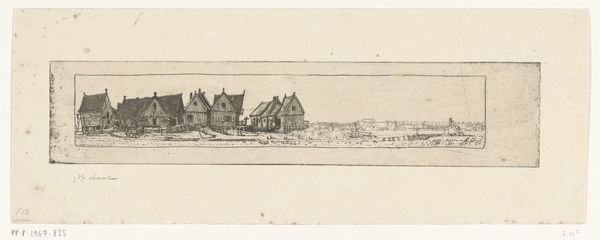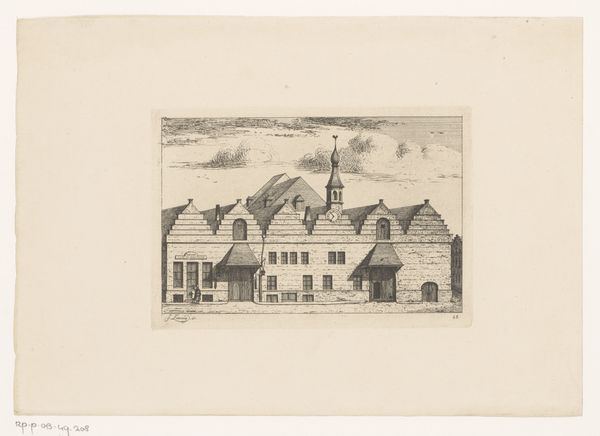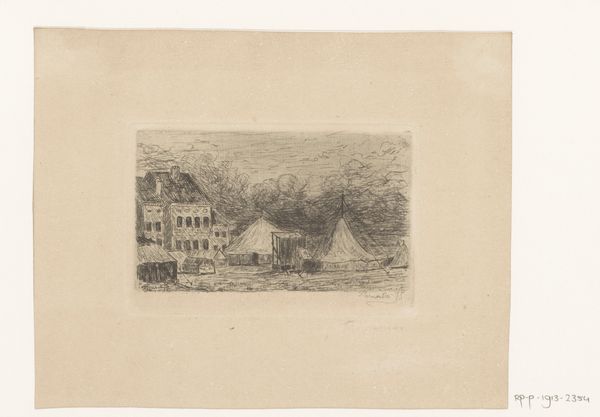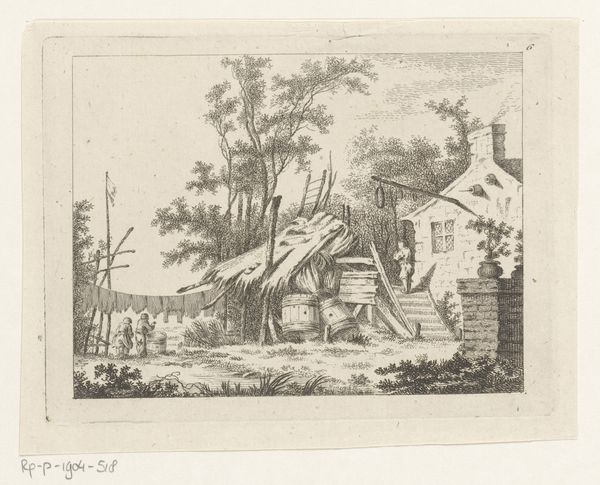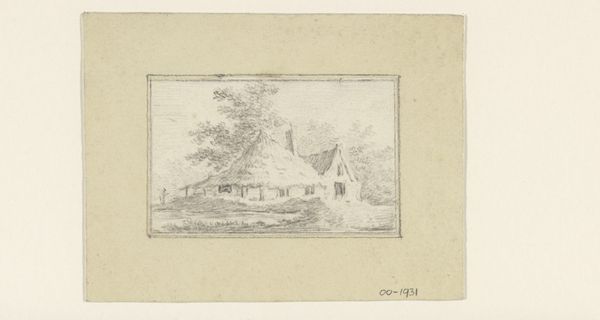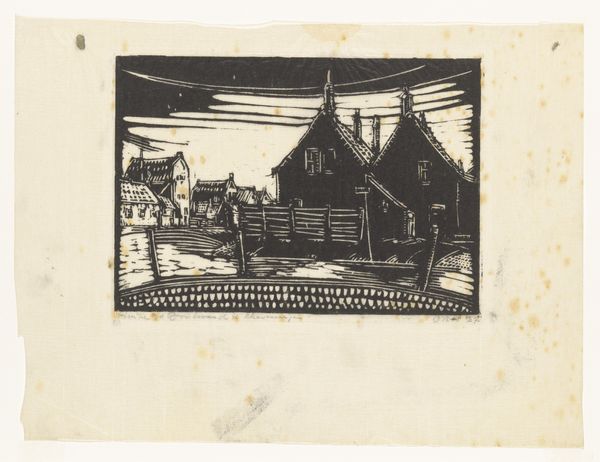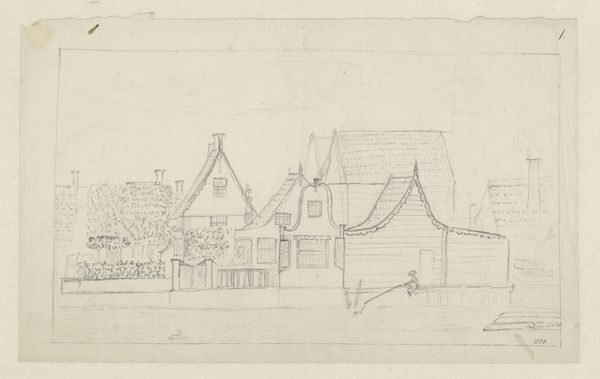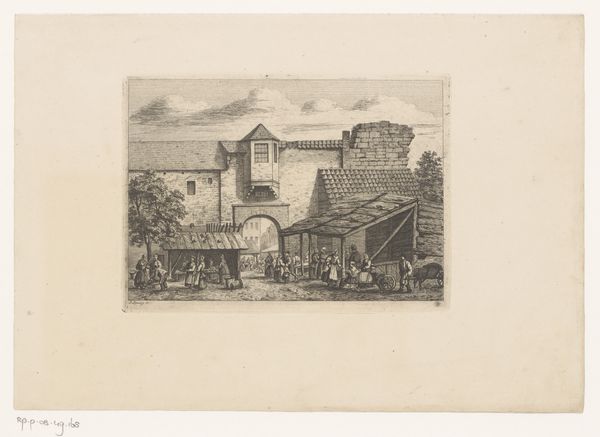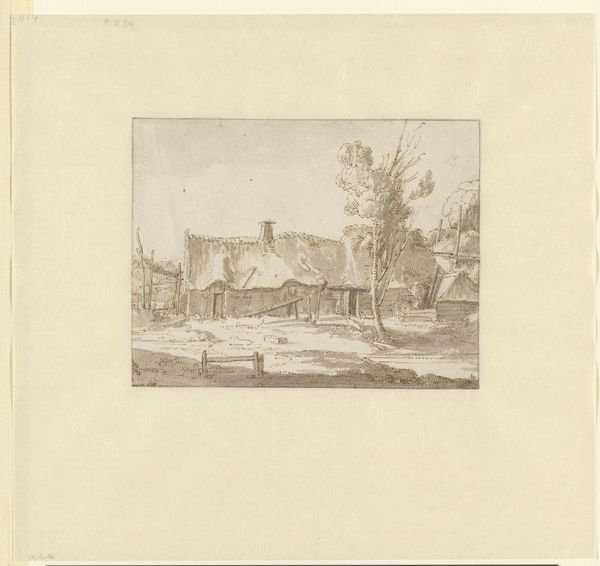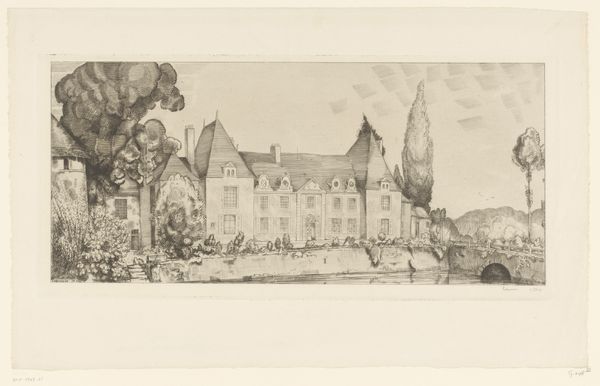
drawing, print, etching, paper
#
drawing
#
dutch-golden-age
# print
#
etching
#
landscape
#
etching
#
paper
#
realism
Dimensions: height 143 mm, width 326 mm
Copyright: Rijks Museum: Open Domain
Curator: Here we have Wijnand Otto Jan Nieuwenkamp's "Het boerenbuurtje, Edam," an etching, possibly from 1914. What strikes you immediately? Editor: Well, first, it’s the meticulous detail. It's a humble scene of rural architecture but it’s encased in layers of text and ornamentation that feel almost precious. Curator: Precisely! Nieuwenkamp was deeply engaged in preserving cultural heritage through his art. He sought to document traditional Dutch architecture and ways of life that were rapidly disappearing during industrialization. Editor: That connects to the labor and materials. The precision of the etching is fascinating; it must have taken ages. The printmaking process elevates an ordinary, perhaps even decaying, farming neighborhood. I wonder, how many prints did he make? Curator: He was part of a larger movement invested in the aesthetic and moral values of craftsmanship. Prints, in particular, democratized art, making it more accessible. "Het boerenbuurtje, Edam" was likely circulated among a middle-class audience interested in picturesque views of the past. Editor: You can really sense that. The framing, with its text, and the linear layout, recalls historical documents as much as it recalls conventional landscape imagery. Curator: Indeed, the inscription along the top and bottom functions almost like a medieval manuscript. Nieuwenkamp appropriates historical forms to legitimize the image and the way of life it depicts. Editor: And by framing it, he almost packages a souvenir, a historical vignette for easy consumption. Curator: In some ways, yes. But also, he invites us to consider the value of preservation. The etching itself becomes a form of safeguarding these rapidly vanishing traditions within the Netherlands. Editor: It prompts you to reflect on what we choose to save, what is worthy of conservation. And how our ideas of value are shaped by nostalgia, history, and market forces. Curator: It's a poignant image, loaded with historical weight and revealing how art plays a crucial role in shaping our understanding of culture. Editor: Absolutely. And how materials and labor intersect to transform the mundane into something…monumental, in its own quiet way.
Comments
No comments
Be the first to comment and join the conversation on the ultimate creative platform.
